Earlier in 2021, I decided it was finally time to step up my film scanning game. I was tired of spending an entire afternoon scanning just 5 rolls of film on the Epson V600 and getting just passable, inflexible results.
I had used some bad setups in the past, and had some film scratched by holders like the Digitaliza. So the Essential Film Holder looked like a really solid option when I first came across it. Getting both 120 and 35mm masks made it cheaper than most other holders, and the negative holder comes with a built-in diffusion panel and was supposed to keep film extremely flat.
After scanning more than 100 rolls with the Essential Film Holder, I’ve found that it is a reliable device for scanning negatives The holder is easy to use while keeping film reliably flat and scratch-free. The EFH is a good solution for the price, but it does have some flaws.
There may be options out there that keep film flatter or allow the user to scan faster by using a winding knob to pull the film through the device. But overall, this system does a good job for the price.
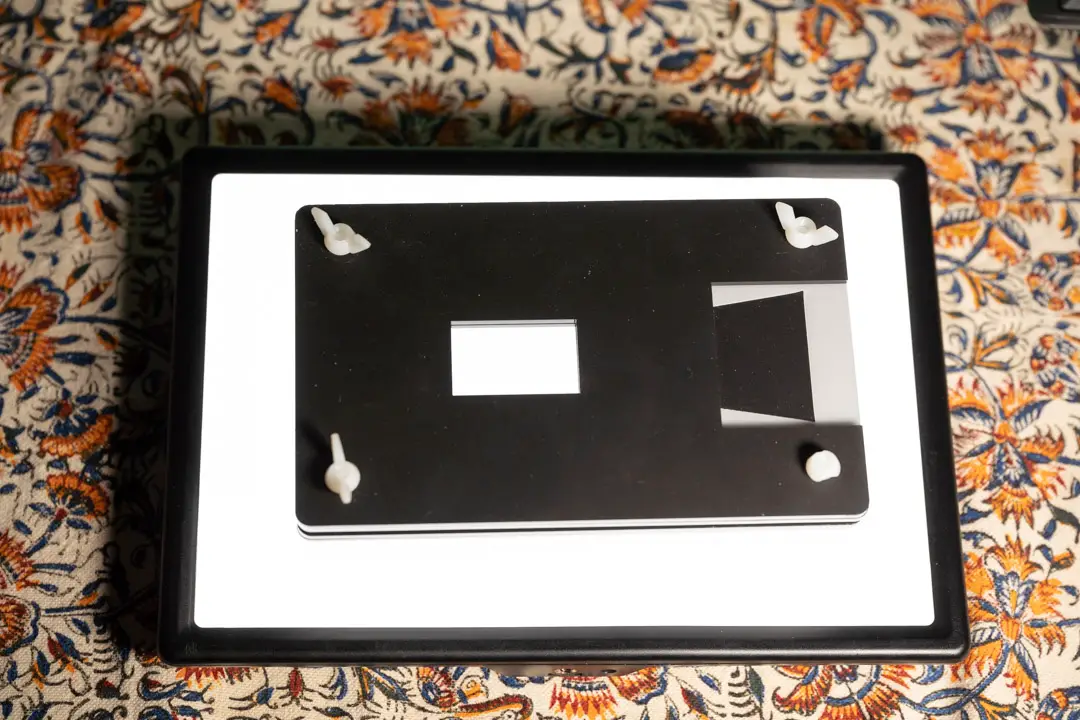
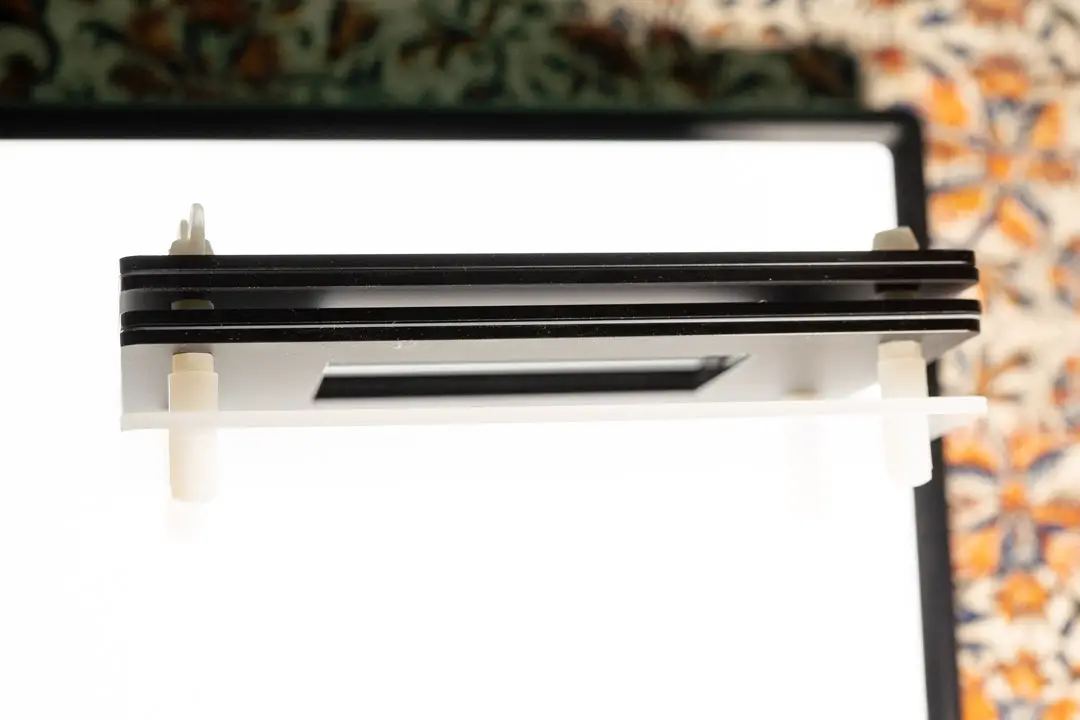
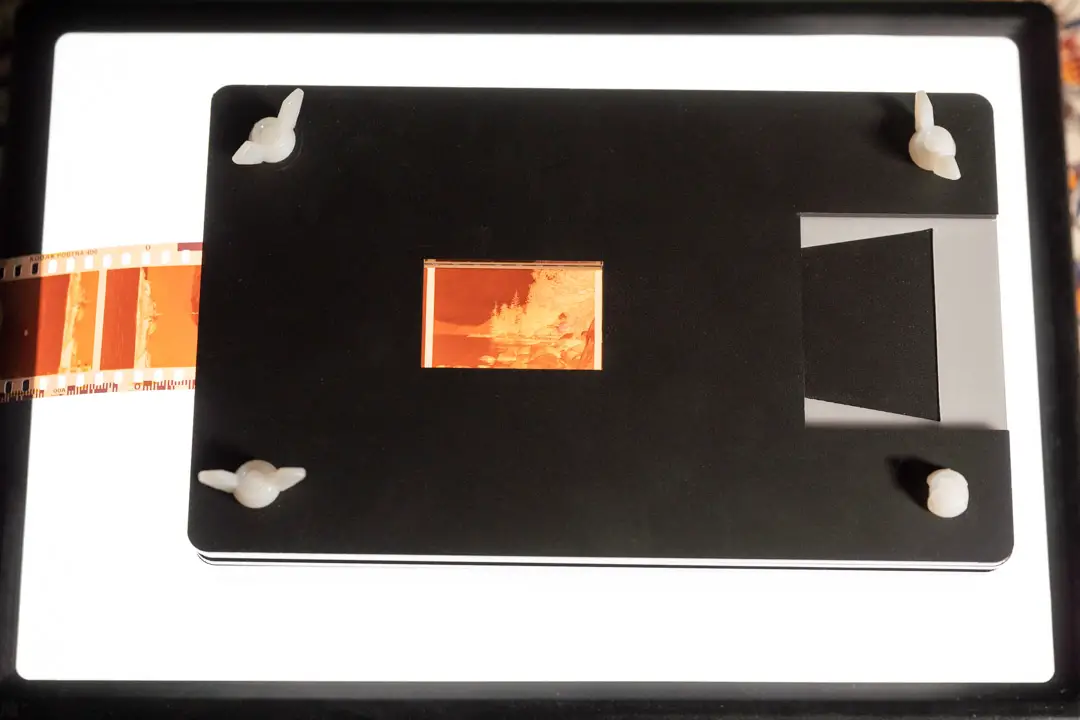
What is the Essential Film Holder?
The Essential film holder is a device that holds negatives flat when DSLR scanning. It is made entirely of sturdy plastic, and is made up of a riser/diffuser panel and masks for either 120 or 35mm film.
The masks are made up of three pieces: a top and bottom mask, as well as a thin plastic sheet that guides the film through. When you’re purchasing the EFH, you can purchase additional masks to show the frame borders, or for different medium format film sizes.

Essential Film Holder pros
The Essential Film Holder has a lot going for it.
This device has been extremely well-thought-out and helps users to be able to scan their film with light sources they already have at home, like an iPad. The EFH erases the problem of picking up the pixels in a DSLR scan by raising the film off the ground and using an opaque plastic diffuser panel to ensure even lighting.
It’s also easy to use and allows users to scan the whole roll at a single time rather than in small pieces like scanner holders or the Digitaliza. I can scan a whole roll of 35mm film in about 10-15 minutes.
It’s not as fast as the EFH website claims because I always end up adjusting the film and trying to keep it as straight as possible so I’m not cropping in Lightroom. This device will not hold the roll tight to avoid scratches. While that’s a good thing, it does mean the roll can get heavy and fall over the edge of my desk, pulling the film out of position. Or, if it’s not properly managed, the roll accumulating outside the holder frustratingly pulls at an angle. I’ve found it to be much worse with 120 film than 35mm.
But when you consider that using the Epson V600 takes me an hour to scan a single roll, I’ll take this any day of the week.
Setting up the device is a breeze. My version has both the 135 and 120 masks attached at the same time. So I can scan 35mm right out of the box after blowing some air through the cracks, or I just unscrew the top section to scan using the 120 mask.
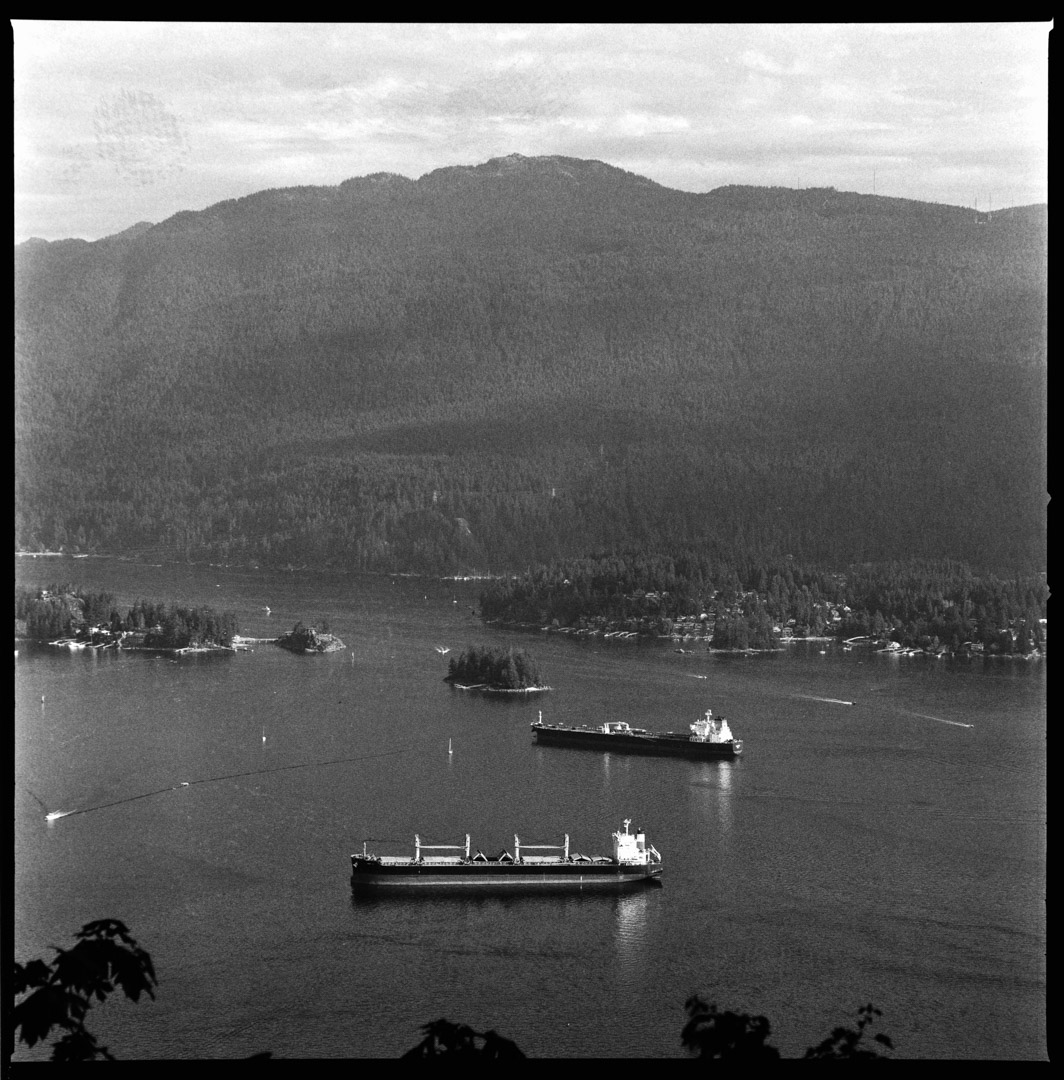
EFH cons
The device isn’t exactly a perfect solution for film photographers. It does a great job overall of keeping film flat and makes scanning a breeze. For 35mm film, I’ve had no problems using this device. But with 120, it can sometimes be a pain to use properly.
The biggest problem that I have is that it doesn’t hold the film tight. This was a design choice, because holding the film tight does risk scratching if — especially when dust makes its way in between the film holders. A few puffs with a rocket blower is usually enough to clear any dust out, but sometimes the new film will bring in a bit of its own.
When inserting 120 film, it’s sometimes impossible to line up the rolls properly. When I scan on my small desk, the film will often move where it wants to, because the guide isn’t tight on some films. That means many of my medium-format shots will move at a frustrating angle from shot to shot.
The edges of the EFH are also reflective. If there’s ambient light in the room, the edges can shine onto your film and leave a white border when they’re inverted into positive images. This problem can be corrected by scanning in a dimly lit room.
And the last issue that I’ve found with this holder is that if the film is cut near the beginning of the photograph, there is sometimes not enough of it to hold the frame flat. And when the film curls inside the holder, the edges will change color, or the image may only be partially in focus depending on your camera aperture. And, of course, that problem is compounded when using the optional addon masks that show the frame edges.
That means this holder is best used with full strips of film, rather than after it has been cut. For me, this works out great, since the scanning only takes a couple of minutes, I can simply run my newly dry roll through the holder and then cut, label, and store the film in one go. But I still occasionally find that the first image on the roll isn’t being held flat because the start of the roll is too close to the frame.
Final thoughts: is the Essential Film Holder worth the money?
The Essential Film Holder is likely the simplest device for scanning film on the market. It handles everything well, but it’s not the perfect, highest-quality device available. For example, I wouldn’t recommend getting the
The EFH feels like something that was made in some British Engineer’s basement (because it kind of is). But it gets the job done without any fuss, and I think that’s something to celebrate.
The website where you can buy the Essential Film Holder is built like a bad sales page that feels more like it’s selling you on a pyramid scheme than a piece of film photography gear. But in the end, you’ll get your product and will be happy with it. If we all sent him emails asking him to change it, he’d probably increase the price, so don’t do that.
After scanning 100 rolls of film with this device, I can safely recommend it. Because while it does have some downsides, it doesn’t have any that have made me want to throw it in the trash and buy a new solution (the same can’t be said about the Epson V600).
Do you have any tips that could help me avoid the problems I’m facing with 120 film? Let me know down in the comments below! I always love hearing tips and tricks from my readers, and respond to every one that I can.

By Daren
Daren is a journalist and wedding photographer based in Vancouver, B.C. He’s been taking personal and professional photos on film since 2017 and began developing and printing his own photos after wanting more control than what local labs could offer. Discover his newest publications at Soft Grain Books, or check out the print shop.

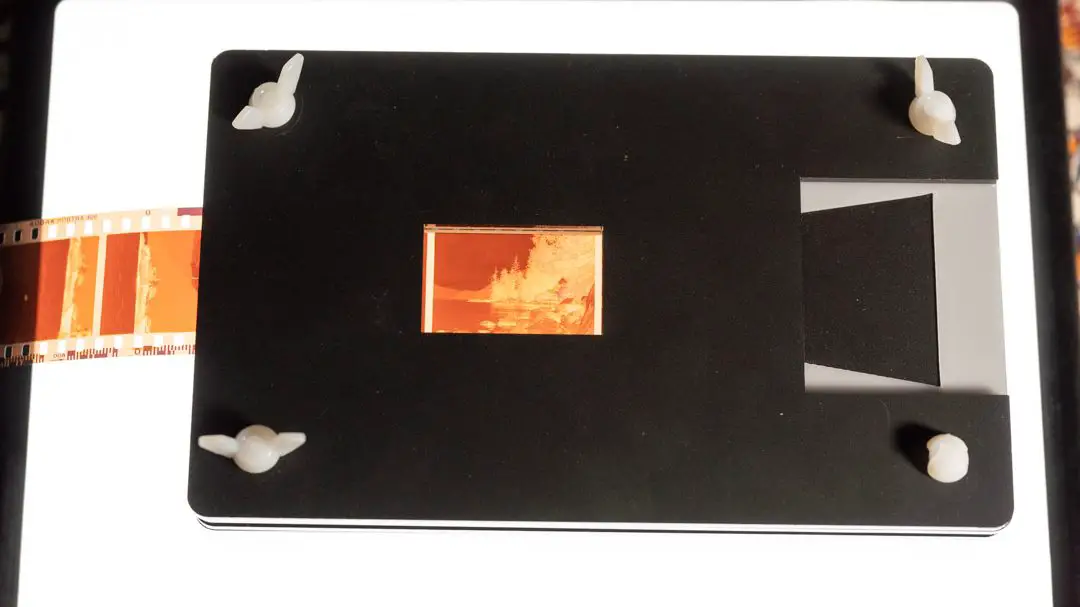
I just scanned 100 rolls of 35mm film with the EFH and it is awesome. My only issue has been with film that is pretty curled. It sometimes has a hard time getting through the other side of the mask. I think that bevevled edges on the far-side of the mask would greatly help to guide the film. I have also scanned about 500 slides
Hi Mitch, glad to hear you’re enjoying it! I’ve been thinking about upgrading, but for the cost the Essential Film Holder is just too good. I’ve had problems with that as well! The way I solved it was to cut the film leader at an angle. That way you just have to catch the pointed edge of the leading in the opposite side of the mask (instead of the whole flat edge at once) and it will go through much easier. Works very well with 120 film, but I’ve also used it with 35mm successfully.
Hope that helps,
Daren